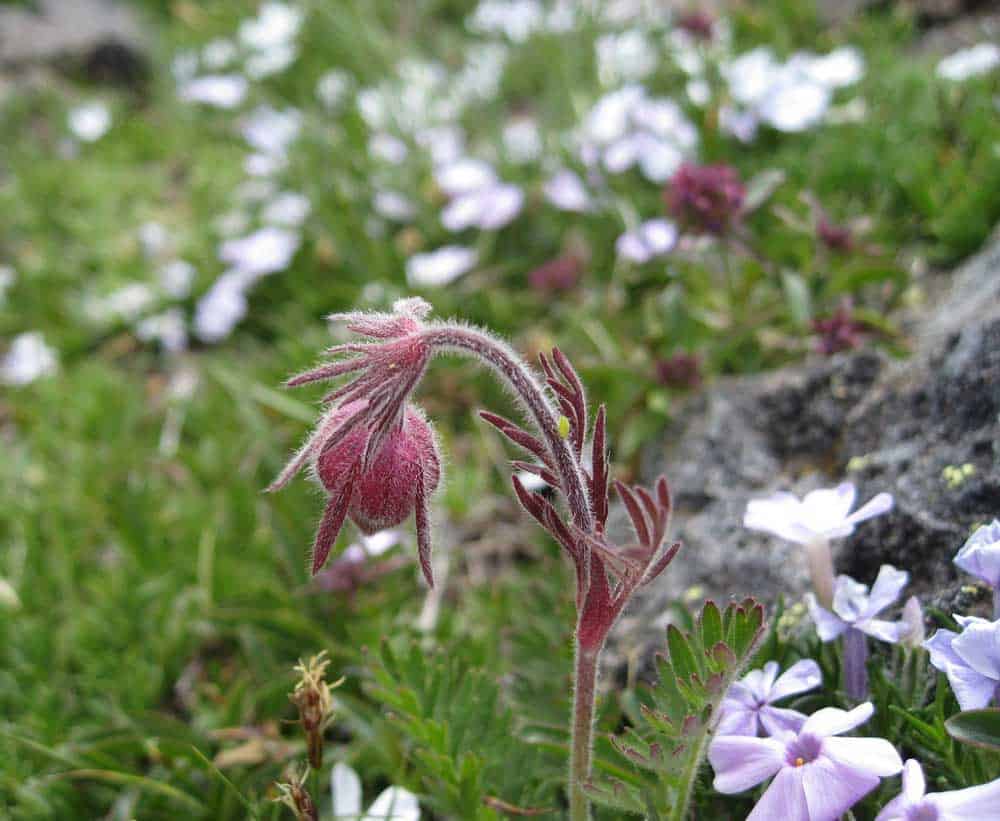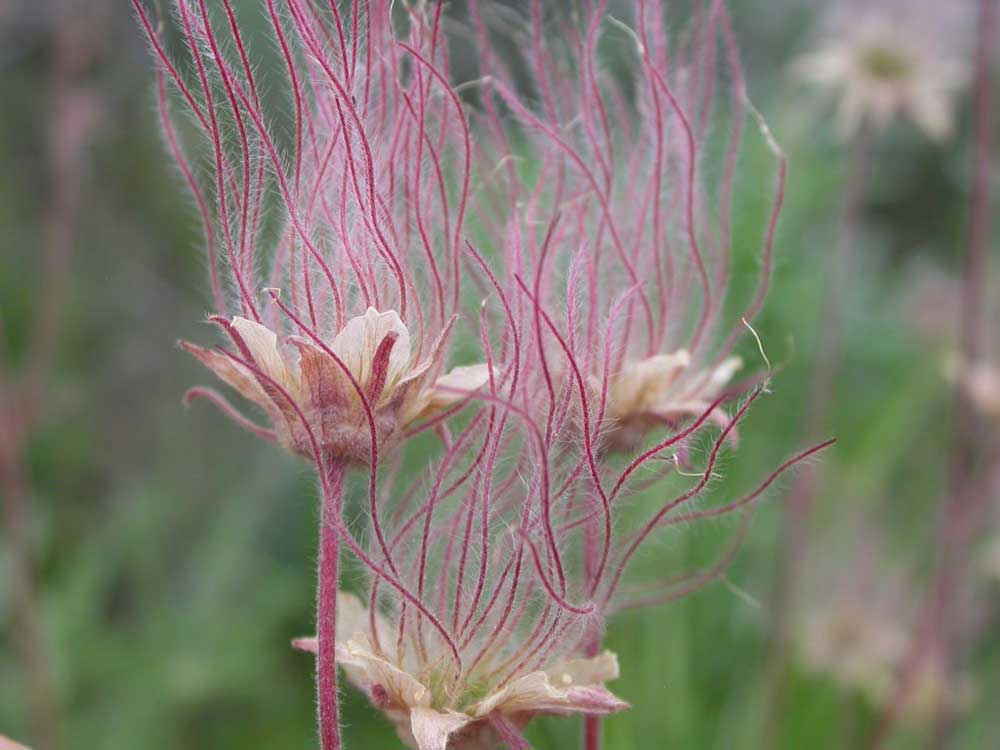Geum triflorum, commonly known as Prairie Smoke, Old Man’s Whiskers, and Three-Flowered Avens, is a herbaceous perennial wildflower native to prairies and open woodlands across the western U.S. and north central plains North America. It grows 6-12 inches tall, featuring finely divided basal leaves and nodding rose-pink flowers in early spring. After blooming, the reddish-purple feathery styles elongate to form the distinctive “smoky” seed heads that give the plant its common name. Prairie Smoke’s deep tap root and low growth habit make it well-adapted to the dry conditions of its native prairie habitat. It helps prevent soil erosion and increases biodiversity in these ecosystems.

Roles in a Native Plant Garden
Prairie Smoke makes an excellent addition to native plant gardens, wildflower meadows, and naturalistic landscaping designs. Its compact size suits rock gardens, borders, and the front of garden beds. The long-lasting feathery seed heads provide months of ornamental interest after the flowers fade.
Benefits for Biodiversity
Gardeners looking to create biodiversity-friendly gardens will appreciate Prairie Smoke’s value to wildlife. The early spring flowers offer much-needed nectar and pollen for native bees, butterflies, and other pollinators emerging from winter dormancy. The seeds provide food for birds later in the season. This plant also helps sustain regional biodiversity by hosting specialist prairie insects like caterpillars.
Special Pollinator and Animal Relationships
Prairie Smoke has a mutualistic relationship with some solitary ground-nesting bees. The bees depend on the plant’s pollen and nectar, while the bees’ ground nests aerate the soil, facilitating water penetration to the plant’s roots. Certain prairie chicken species also utilize Prairie Smoke’s feathery seed heads when building their nests.

Ornamental Value in the Garden
In addition to supporting biodiversity, Prairie Smoke makes an attractive ornamental plant for gardens. Its nodding pink flowers are charming in spring, and the “smoky” seed plumes create an ethereal hazy effect for months when backlit by sunlight. The fine-textured foliage provides contrast when mixed with bolder plants.
Interesting Facts About Geum Triflorum
- Prairie Smoke gets its scientific name triflorum from the flowers appearing in clusters of three.
- This plant has an association with the indigenous cultures of the Great Plains who found medicinal uses for the roots.
- Despite its delicate appearance, Prairie Smoke is quite low-maintenance once established, tolerating drought, cold winters, and partial shade.
Overall, Geum triflorum is a versatile and valuable native wildflower to incorporate into biodiversity-focused gardens. It offers four-season ornamental interest while sustaining regional pollinators, birds, and other wildlife.
